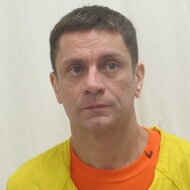Create a free profile to get unlimited access to exclusive videos, breaking news, sweepstakes, and more!
How a Retired Cop’s Murder Helped the NYPD Catch a Pair of Violent Spree Killers
N.Y.P.D. detectives scrambled to stop two men wanted for a deadly 13-hour rampage that left two dead and another seriously injured.
The N.Y.P.D. takes every homicide case seriously, but when someone murders one of their own, it becomes personal.
It was the morning of August 1, 1991, when N.Y.P.D. officers were dispatched to the Stillwell Avenue Station, an elevated section of the subway line near Brooklyn’s Coney Island. Inside the B Train, police found an unresponsive male, according to homicide Detective Patrick Boyle from the N.Y.P.D.’s 60th Precinct.
“The train left Stillwell Avenue going towards Manhattan, made it one stop to Bay 50th, and people getting onto the train found the body,” Boyle told New York Homicide, airing Saturdays at 9/8c on Oxygen.
The victim was a white male in his 50s, found lying face-up on the subway floor with five bullet wounds to the chest and face.
Police found no signs of a murder weapon, nor were there any witnesses. It was also uncertain where along the subway line the homicide occurred.
“There was no rigor mortis,” said retired N.Y.P.D. Detective Phil Grimaldi. “So we believed the shooting had taken place just before the victim’s body was found.”
The victim wore a postal service uniform, and investigators found an N.Y.P.D. shirt underneath. A sergeant’s shield in his pocket revealed he was Sgt. Robert Zink, who had just retired from the force months earlier.
“There was a collective gasp; Everybody went, ‘Oh, God, this is a cop. Somebody had killed one of ours,'” said Boyle. “That hit home. That could have been me in that situation.”
Who was Sgt. Robert Zink?
Sgt. Zink was a family man living in Staten Island. He and his wife, whom he’d met years earlier while working at a home insurance company, shared several children, including a daughter, Jennifer O’Conner née Zink, and three sons. Soon after marrying his wife, Zink joined the N.Y.P.D. and quickly climbed the ranks, becoming a sergeant in 1979.
As detectives worked the Stillwell Avenue crime scene, then-20-year-old Jennifer received a phone call from Zink’s supervisor at the post office in Brooklyn, wondering why Zink hadn’t arrived at his job.
“As soon as I hung up with him, I had a sickening feeling in my stomach,” O’Conner told New York Homicide. “I knew something was wrong.”
Zink’s son, Robert Zink Jr. — who also worked for the N.Y.P.D. — got confirmation from a commanding officer that his father was killed.
“My father was a wonderful human being,” said son Mark Zink. “An outstanding family person who loved all of his children, loved his wife, loved his entire community.”
An Investigation Underway
“Anytime a police officer’s killed, that’s a line that’s crossed,” said Det. Grimaldi. “So, in my mind, we gotta get this guy.”
Post-mortem examiners retrieved several .38 caliber bullets from Zink’s body and sent them off for ballistics testing. Meanwhile, detectives looked into robbery and dispute and possible motives for why someone would have harmed Zink, but they also looked into whether his past dealings while on the force might have played a part.
“My father had a very dangerous career,” said Zink Jr. “He was in narcotics, and he worked undercover running a narcotic unit for the 9th Precinct.”
It was a neighborhood that, back in the ‘70s, was ravished with drugs and crime. Back in the day, Zink was responsible for heading “Operation Pressure Point,” a task force that led to record-breaking arrests.
It was days of dead ends for investigators until violence struck the city once again.
A Second Murder
Detectives kept digging when a call from officers at the 68th Precinct, covering Brooklyn’s Prospect Park South — about five miles north of the crime scene — came to investigators. Police said there was another homicide where delivery cab driver, Wah Lee, was killed with a .38 caliber firearm just 11 hours before Zink’s murder.
Ballistics would prove Lee and Zink were killed with the same weapon.
According to eyewitnesses, Wah Lee had exited his cab at his shift’s end when two white males approached him and tried snatching his satchel. The satchel contained a portable car radio which, according to Det. Boyle, would have been worth about $2,000 back in 1991.
Witnesses said Lee refused to let go of the bag, when one of the men shot him to death.
“Poor guy, just walking down the street minding his own business,” said Boyle. “Shot him dead. All because he didn’t want to let go of his radio.”
Witnesses said the two suspects got away in a white Dodge Dynasty.
RELATED: A Realtor to the Stars Is Found Bludgeoned to Death in Her Luxury NYC Penthouse
Three days later, thanks to a city-wide lookout issued to N.Y.P.D. precincts, the 68th reported having a burnt, white Dodge Dynasty at their police impound. Detectives said police impounded the car on the night of Lee’s shooting.
“It was a complete shell,” said Det. Grimaldi. “Completely burnt out.”
Beneath the car seat was a burned portable radio, matching the one taken from Lee.
Police linked the car’s license plate number to a man named Kenneth Prill.
The Shooting of Reverend Kenneth Prill
According to the police report, Reverend Kenneth Prill was abducted, robbed, and shot in the face on July 31, 1991, just hours before Lee’s murder.
Thankfully, Prill survived the attack and was still recovering from his wounds at a local hospital at the time of the homicide investigations. Police hoped Prill could help them identify the man or men responsible for the deadly string of attacks.
Speaking with New York Homicide, Rev. Prill said July 31 started as “an ordinary day.” He had just dropped his wife off for a doctor’s appointment in Park Slope, a safer and well-manicured neighborhood in Brooklyn.
After parking his car and exiting, two men approached him, one pressing a .38 caliber revolver against Prill’s side and forcing him back into the car.
“The man who had the gun on me in the rear seat asked for my wallet,” said Rev. Prill. “And as we drove off, he said, ‘Look to the floor of the car because if you look up, I’m gonna kill you.’”
The men drove aimlessly for the next two hours, the killers searching for a possible victim. They then stopped at the Fountain Avenue landfill, a desolate area known for dumping bodies. The suspects told Prill they would let him go home, ordering him to exit the vehicle.
“I put my foot on the ground, and I saw a little flash of light in my left eye,” said Prill. “He fired the gun into my face from two feet away. I felt a bullet entering my face as it threw me to the ground… I immediately had an excruciating earache.”
Prill managed to run for help when a Good Samaritan stopped and called for an ambulance. Doctors called Prill’s survival a miracle, noting that the stainless-steel rim of his glasses helped pivot the bullet’s trajectory before it landed in the soft tissue of Prill’s sinuses, where it remains today.
Prill said he caught a peek of the driver of the Dynasty and provided detectives with a composite sketch.
The Suspects
Police released the sketch to the media and formed a task force to find who shot three people at random in what Det. Grimaldi called “a rampage.”
Three weeks after the attacks, the N.Y.P.D. received a call from the Middlesex County Correctional Center in New Jersey, where an inmate jailed for robbery claimed to have information about the suspects.
The informant, Eduardo, said he’d been talking on the phone with two ex-cons, Richard Springer and Mark Asher, a pair of heroin addicts who’d helped commit burglaries with Eduardo in the past, according to detectives. Eduardo said they copped to killing a cop in Brooklyn.
“We knew this kid was on the money,” said Det. Boyle.
Eduardo said Springer was out in Las Vegas and agreed to let investigators tap the phones as Eduardo continued his jailhouse communications with the suspect. On the phone, Springer confessed to killing Zink.
“He said, ‘I didn’t like cops,’” according to Det. Grimaldi. “’I didn’t like cops; that’s why I killed him. It was a matter of principle.’”
New York detectives contacted Las Vegas authorities, who quickly found Springer via the phone number he used to communicate with Eduardo. Soon after flying out to Las Vegas, Springer confessed to the crimes.
“He said, ‘I did all of it,’” according to Boyle.
Springer said he and Asher — who was still unaccounted for — attempted to kill Prill for his vehicle before robbing Lee to score money for drugs. As for Zink, it was a matter of not liking cops.
“He told us that right there in the Las Vegas police headquarters. He said, ‘I will kill you,’” said Boyle. “Twenty years on the job, I can say that’s the most evil person I’ve ever dealt with in my career, and I’ve dealt with some bad ones.”
Springer gave up Asher’s address, and police soon arrested him as he left his Brooklyn home. He, too, confessed to the killings.
Asher claimed Springer shot Prill and Zink, and Springer claimed Asher killed Lee, as seen in taped interviews shared with New York Homicide.
The Convictions

The men also admitted to murdering a woman, Lorraine Finnegan, one year before their deadly spree. According to Det. Boyle, the men casually confessed to picking her up for sex and killing her, bringing the pair’s murder tally up to three.
Ultimately, both men were charged with two counts each of second-degree murder, robbery, weapon possession, and one count each for kidnapping.
Both were found guilty, though neither were convicted for Zink’s murder. A jury found that the jailhouse confession by Springer wasn’t enough to arrive at a guilty verdict.
Detectives and Zink’s loved ones alike believe Springer killed Zink, and they were content with the other guilty verdicts.
“We did not get a conviction, but we got the guys,” Robert Zink Jr. told New York Homicide. “I’m comfortable with the fact that they’re in prison for the rest of their lives without parole. I can live with that.”
Richard Springer was sentenced to 100 years to life behind bars, while Mark Asher was sentenced to 82 years to life.
“I like to think that I survived so that I could get justice for Lorraine Finnegan, so that I could get justice for Wah Lee, so that I could get justice for Sgt. Robert Zink,” said Rev. Prill.
Watch new episodes of New York Homicide Saturdays at 9/8c on Oxygen.





































